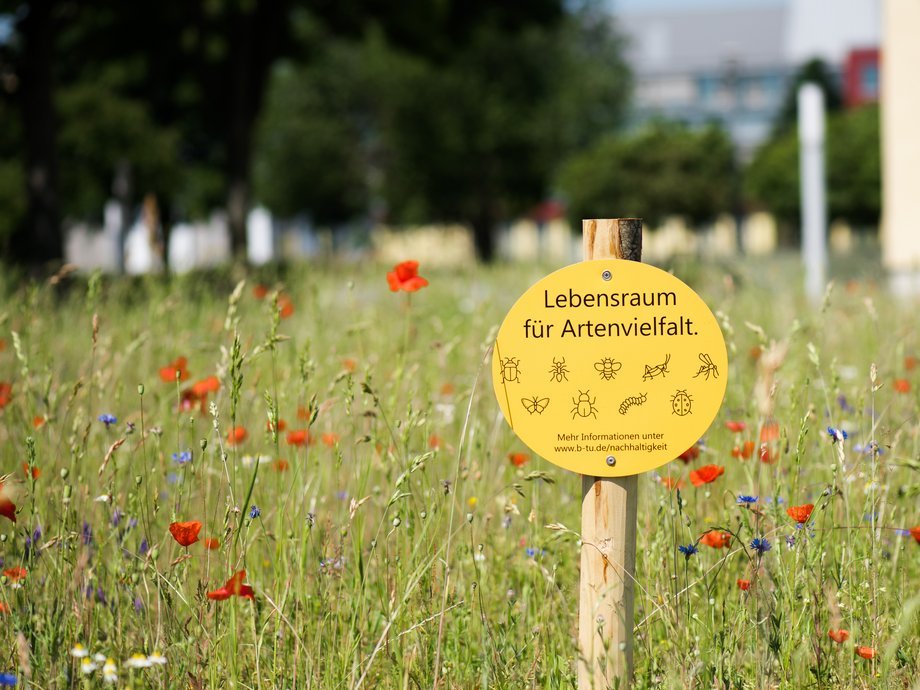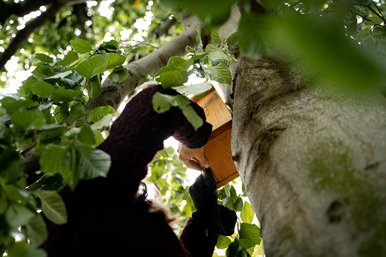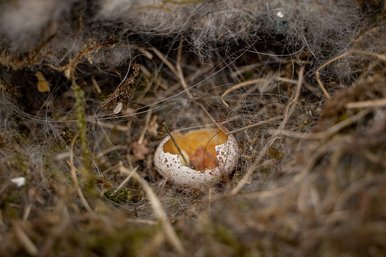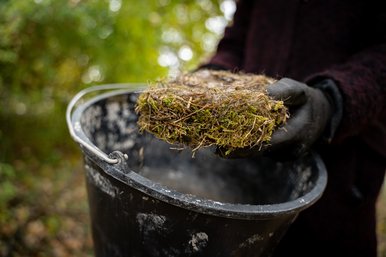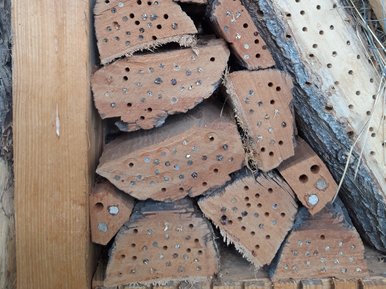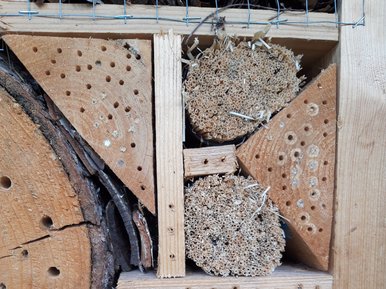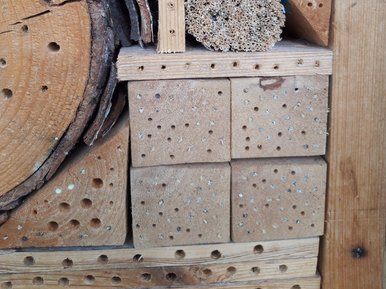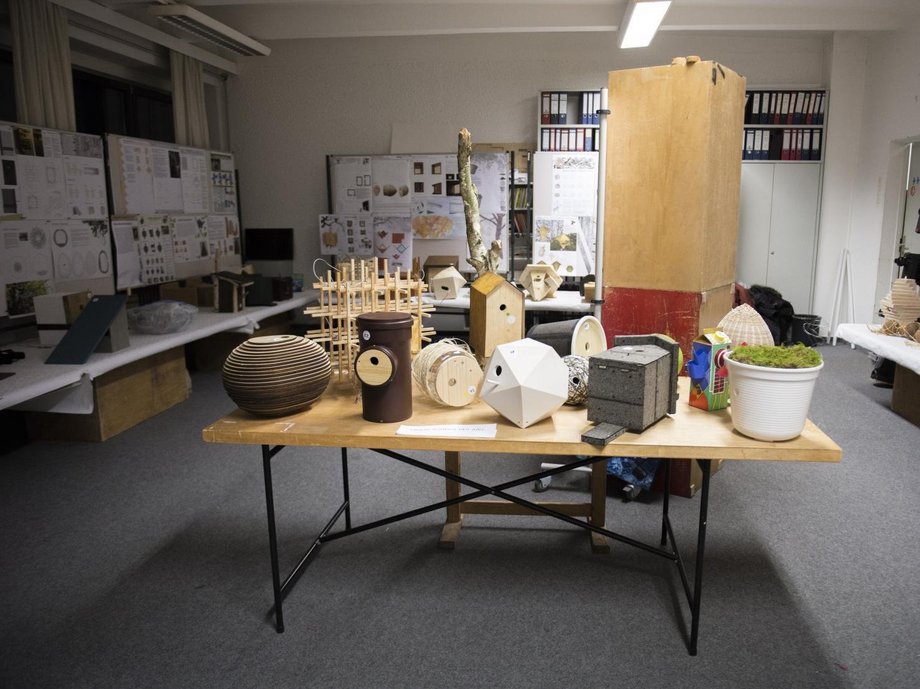Promoting biodiversity at the BTU
Wildflower meadows and flower strips
In 2020, several areas on the Senftenberg campus were specifically planted as wildflower meadows using regional seeds. In addition to various types of grasses, bluebells, cornflowers, knapweeds, meadow margarites and many other wildflower species were sown. In total, a habitat for biodiversity has been created on almost 9,000m2.
Please do not enter the areas and instead use the paths so that the wildflowers can develop.
All other areas can be walked on as usual and also used for outdoor teaching events. Thank you.
Wildflower seeds have also been sown at Central Campus: In front of the main building, poppies, cornflowers and daisies, among others, are blooming on small flowering strips.
For those who want to know exactly: we have listed the wildflower and grass species sown in Senftenberg in an overview with botanical and German names as well as pictures for easier identification. Have fun discovering and identifying them. :)
Nesting boxes for birds and wild bees
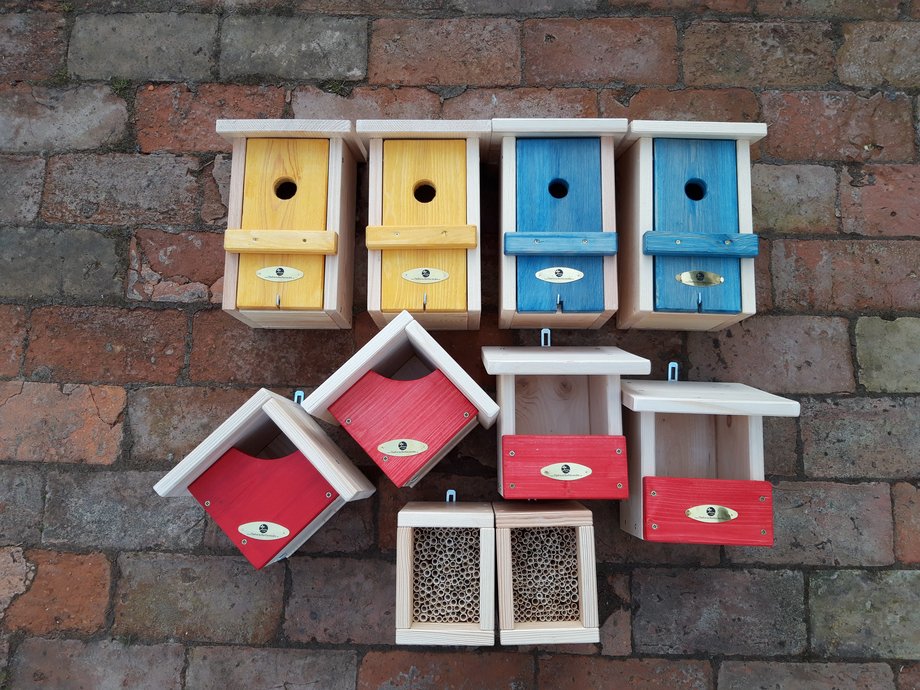
Nesting boxes for birds and wild bees have been or will be attached to the trees at all sites. In the selection process, we have placed particular emphasis on a wide variety of nesting possibilities:
- Half-caves for niche nesting birds such as robins and pied flycatchers,
- Half-caves for niche breeders such as the Redstart and Black Redstart,
- Nest boxes with a 28 mm entrance hole - especially suitable for blue tit, fir tit, marsh tit and crested tit,
- Nesting boxes with a 32 mm entrance hole - especially suitable for great tit, tree sparrow and house sparrow,
- Wild bee nesting aid made from natural reed stalks
The nesting boxes have been developed according to the recommendations of leading nature conservation associations and are made of wood from sustainable German forestry in workshops with a social background in Germany.
Anyone who wants to look for the nesting boxes on campus and observe the animals can look at the campus maps for Central Campus, Sachsendorf (from spring 2022) and Senftenberg to see the exact locations. In terms of colour, the nesting boxes are easily recognisable in red, yellow and blue.
The birdhouses are checked and emptied once a year in autumn - so that the houses are ready for the next generation in the new season and no diseases are transmitted. Of course, we are also curious to know how many houses have been accepted and inhabited. :) In 2021, 6 of the 10 nest boxes at the central campus were occupied. In Senftenberg, word of the new living quarters has yet to get around in the bird world.
Insect hotel
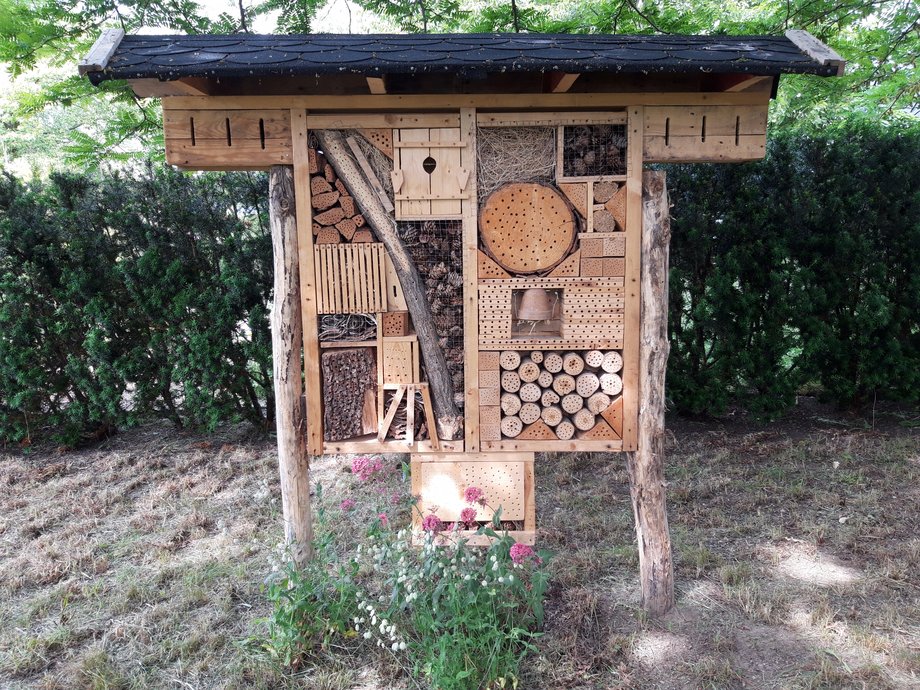
As part of an extracurricular internship, a committed BTU student replaced the old insect hotel at the Central Campus with a new one. It was important to him not to use newly purchased materials, but to recycle things. The wooden frame is made of old Euro pallets and the inside of the insect hotel is filled with finds from nature. The new insect hotel also has two special features: there is an integrated bird house and extra retreat areas for butterflies. Many thanks to Clemens Strangfeld!
Student initiatives: BTU Bienen e.V. and Gumno Garden
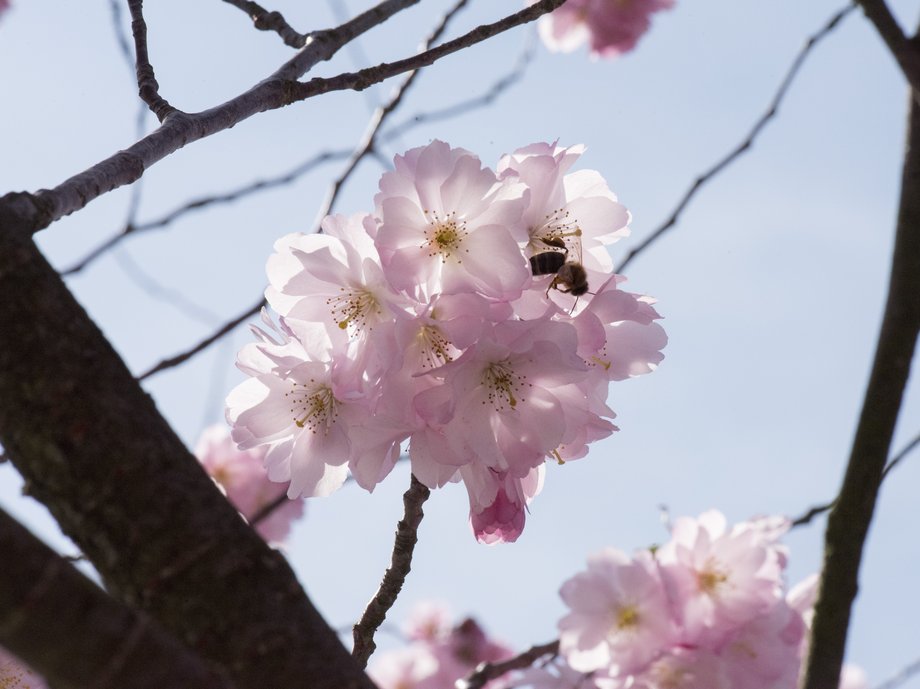
There are two student initiatives at the Central Campus that make a great contribution to promoting biodiversity and species diversity on campus: the BTU Bienen e.V. (= BTU Bees registered society) and the Gumno Garden - Garden for All, in which the concept of permaculture in particular is pursued. Further information on both initiatives and opportunities to get involved can be found under Join in - Initiatives.
Impromptu bird house at the Central Campus
In order to offer native birds on the central campus of the BTU Cottbus-Senftenberg special protection from environmental influences and predators, students have designed nesting boxes as part of the “Stegreif Vogelhaus” project of the Department of Plastic Design and the architecture student body.
The inspiration for the design and installation of these nesting aids came from a bachelor's thesis in which bird species were mapped on the central campus grounds. Among other things, it was found that the campus has an average number of breeding bird species (14) and an above-average number of breeding pairs for most species (10). It can be concluded from this that the campus is of high importance for the bird life in Cottbus. However, the range of bird species on campus can still be increased by, for example, planting flowering strips, improving green space management and installing nesting boxes.
There is more information about the breeding bird mapping on the campus grounds on the website of the Environmental Technologies Student Council (only available in German).

